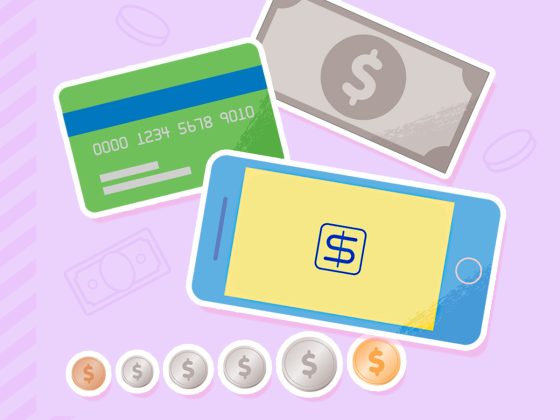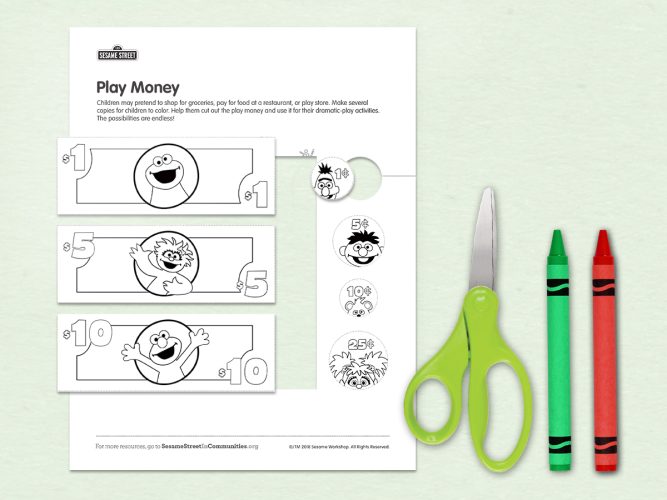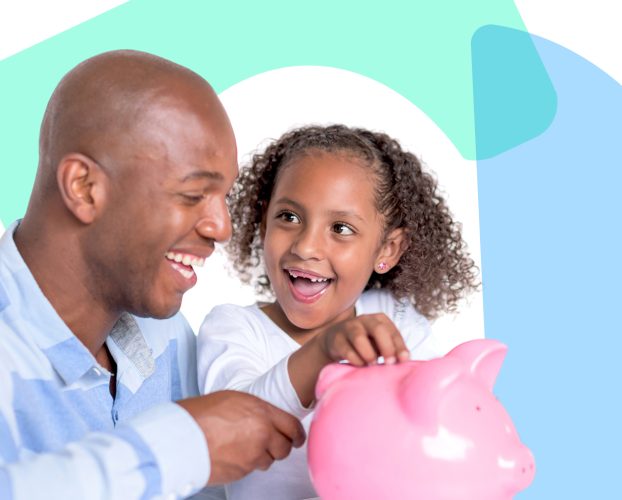
Session 4: Money Basics
You can introduce the concept of money with simple language.
Welcome to Session 4: Money Basics!
In this session, explore resources, hands-on activities, and talking points to teach children about money – what it is, what it’s used for, and how people get it.
1. Talk Together
Talk Together
You can introduce the concept of money with simple language:
What is money?
Money includes coins and paper money such as dollar bills. Plastic credit and debit cards are used to pay with money that is held at the bank. When you use a credit card, you’re promising to pay later.
What is money for?
We use—or spend—money on things we need, such as food and clothing. We can also choose to spend money on things we want, such as games or toys. We need money to pay for services, too—such as riding the bus, haircuts, and lessons or activities.
How do people get money?
The main way people get money is by earning it. That means they work—they do a job and are paid for it.
Talk with children about different types of money, for example, paper bills, coins, and international currencies. You might show real money, photographs or illustrations on posters, and/or point out money in books and games. (Remember to keep coins out of reach of young children, as they can be a choking hazard.)
What we use to pay for things and services
Learning About Earning
Talking about jobs is a great way to start building the concept of how people earn money. Explain that most people earn money in return for work.
When you discuss people in the community, such as a mail carrier, store clerk, doctor, librarian, or teacher, mention that these titles are connected to jobs. Jobs are a way that people earn money. Guide children to talk about the work people do in the community by asking questions such as: Why do you think this person’s job is important? What would happen if no one did that job?
Use cultural events or holidays (e.g. Women’s History Month, Election Day, Labor Day, or Teacher Appreciation Day, as opportunities to talk about people’s jobs and the important work and accomplishments of people they know. Invite children to talk about jobs related to events throughout the year, such as elected leaders, athletes, doctors, inventors, scientists, teachers, activists, and entertainers.
2. Explore Together
Explore Together
Watch the videos How Do People Get Money? and The Job Song with children to help them learn about jobs adults do to earn money.
- Talk to kids about the jobs in the video. Ask, “Do you know anyone who has any of those jobs?” and “What other jobs do you know?”
- Although kids are often asked “What do you want to be when you grow up?,” they might need help understanding that people work hard at their jobs to earn a living. Begin teaching kids about money by pointing out workers in your community. Talk together about how people use the money they earn to buy the things they need and want.
3. Play Together
Play Together
Provide play money in your pretend play areas.
Invite children to color and cut out the printable play money. Suggest that children sort the money by type or amount. Kids can even create their own play money. What would your money look like? What would your money be made of?
Gently reinforce the connection between jobs and earning money during children’s time in your Dramatic Play center or station. It looks like you’re cooking a yummy waffle breakfast. Are you a chef? A chef is a person who earns money by cooking.
4. Communicating with Caregivers
Communicating with Caregivers
Consider sharing the article Money Talk to help parents and other caregivers answer their children’s questions about money.


